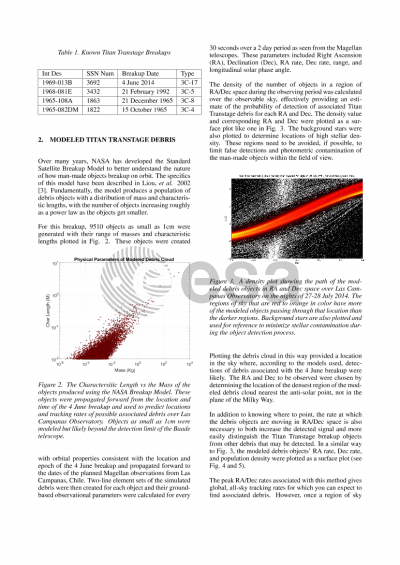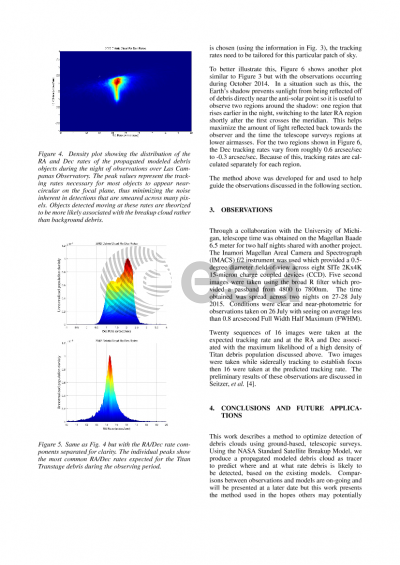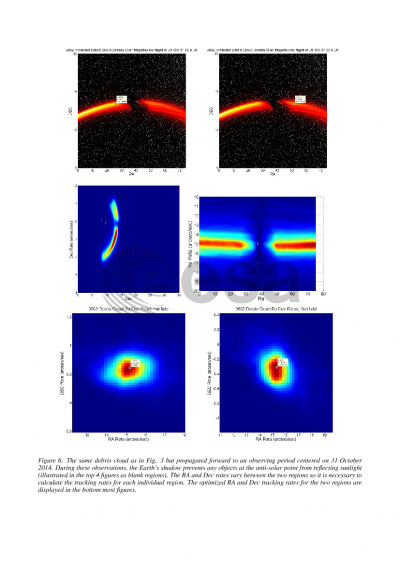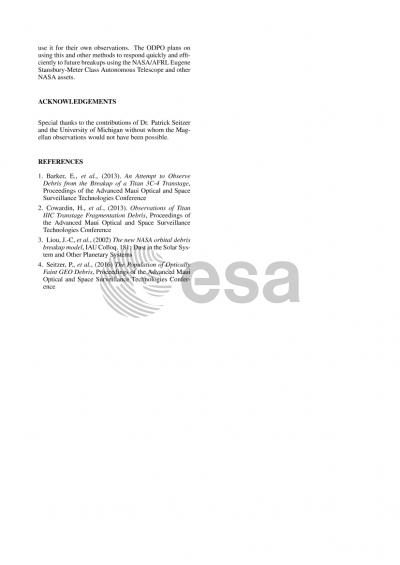Document details

Abstract
A breakup of the Titan 3C-17 Transtage rocket body was reported to have occurred on June 4th 2014 at 02:38 UT by the Space Surveillance Network (SSN). Five objects were associated with this breakup and this is the fourth breakup known for this class of object. There are likely many more objects associated with this event that are not within the Space Surveillance Network’s ability to detect and have not been catalogued.
Several months after the breakup, observing time was obtained on the Magellan Baade 6.5 meter telescope to be used for observations of geosynchronous (GEO) space debris targets. Using the NASA Standard Satellite Breakup Model (SSBM), a simulated debris cloud of the recent Transtage breakup was produced and propagated forward in time. This provided right ascension, declination, and tracking rate predictions for where debris associated with this breakup may be more likely to be found in the sky over Magellan for our observing run. Magellan observations were then optimized using the angles and tracking rates from the model predictions to focus the search for Transtage debris. Data were collected and analysed and preliminary comparisons made between the number of objects detected and the number expected from the model. We present our results here.
Preview






